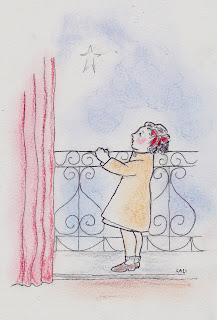“Don’t focus on finding a
man,” old self-help books used to advise husband-hunting women. “Instead, get involved
in something: take an evening course, join a bird watchers group, volunteer.
And when you least expect it, the love of your life will appear.”
Lately I’ve been coming
across similar advice, albeit on topics other than finding a man.
Like everyone I know who has
tried to meditate, I often feel frustrated at my seeming failure to get
anywhere. What is the point, I wonder, of sitting day after day with aching
hips and knees while my mind compiles grocery lists and resurrects old
forgotten gripes? When will I finally see results, find peace of mind, achieve
even a dumbed-down version of enlightenment?
Here is Thomas Merton on how to approach meditation
(which he refers to as contemplation): “[A] law of the contemplative life is
that if you enter it with the set purpose of seeking contemplation, or worse
still, happiness, you will find neither. For neither can be found unless it is
first in some sense renounced.” (Thomas Merton, The Inner Experience, p. 2)
As with finding a mate, it
looks like the only way to reach a meditative or contemplative state is not to
go at it head-on, with focus and singleness of purpose--not, in other words, in
the way that we were taught at school. Rather the trick seems to be in a
sideways approach, not looking the thing directly in the eye but waiting quietly
for it to come to you, sort of how you might entice a wild animal.
Speaking of wild animals, I
found an astounding example of this “pursuit by indirection” in a Nature
documentary about the rare, elusive, and endangered Siberian tiger.
Sooyong Park, a Korean photographer,
lived five years in the far eastern forests of Russia filming the tigers. He
spent as long as seven months at a time in complete solitude, hunkered in a
four-foot hole he had dug in the ground and roofed with planks, or up on a tree
blind. He subsisted on rice, nuts and salt, in -30F temperatures, as he waited endlessly
for the tigers to appear.
At one point, having gone
eighty days without even a glimpse of a tiger, he became entranced with the
beauty of the falling snow and started filming that instead. And that is when not
one but three tigers—a mother and her cubs--appeared.
Towards the end of the video,
a biologist who is also hoping to film the tigers asks Sooyong Park for advice.
Here is Park’s response:
“Don’t think about tiger!
Only hear,
see,
feel the
Nature.
And then maybe tiger come….”
We each long for our own tiger.
But perhaps, instead of crashing through the forest after it in the time-honored
American way, we could try waiting patiently, focusing on our daily tasks, and
paying attention to what is before us.
And then maybe tiger come.
(Park’s five years in the
forest, which left him so weak and wasted that he could barely walk, yielded
unprecedented footage of Siberian tigers in the wild. You can see it here.)



